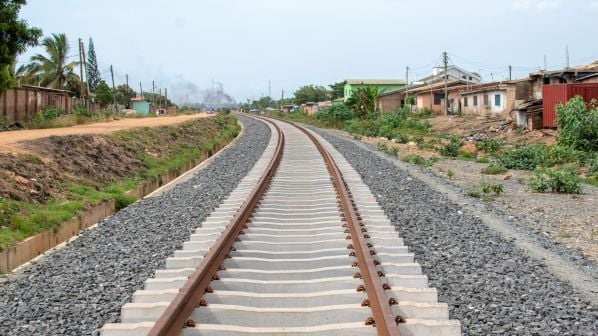THE government of Ghana has outlined its ambitions for three rail projects worth a combined $US 12.9bn, as the country looks to attract private investment in order to achieve its development goals.
The projects form part of the West African country’s wider infrastructure development goals that will help it achieve the United Nation’s (UN) Sustainable Development Goals (SDGs) and the African Union Agenda 2063. The projects were included alongside 13 other projects in an investment brochure compiled by the government for the UN’s 2021 SDG Investment Fair, in order to generate interest among investors and attract private funding to achieve the SDGs and improve the quality of life in Ghana.
The first project, which is currently at the feasibility stage, is the development of a light rail transit (LRT) network comprising seven corridors in Kumasi, Ghana’s second largest city which is a converging point of commercial activity and a key transport hub. The government says the city’s economic progress and rapid urbanisation have led to traffic congestion which inhibits growth.
The $US 5.8bn project is due to start in 2025 and will be developed through a public-private partnership (PPP), with 70% of the financing through debt and the remaining 30% through equity. The project will be implemented under a 30-year concession, with a net present value (NPV) of $US 404m, a financial internal rate of return (FIRR) of 15.6%, and a benefit-cost ratio (BCR) of 1.12.
The 672km Central Spine line, also currently at the feasibility stage, will run from the centre of Kumasi via Mankranso, Bechem, Sunyani, Techiman, Kintampo, Buipe, Tamale, Walewale, Bolgatanga, and Navrongo to Paga, near the Burkina Faso border. Construction of the $US 3.3bn project is expected to start in 2023 and open in 2029.
The project will be implemented through a PPP or a build, operate, transfer (BOT) contract, with a 30-year concession and will be funded through a combination of debt and equity. The line will have a $US 945m NPV at an 8% interest rate, a 9.45% FIRR until 2055, and a 13.2% Expected Internal Rate of Return (EIRR) until 2055.
The funding brochure also includes 14 projects at an early stage, including the Trans-Ecowas railway which is at the pre-feasibility stage. The proposed 550km east-west, mixed-traffic line will run from Aflao on the Togo border to Elubo on the border with Côte d’Ivoire with a branch line to Keta. The government says the project promises to bring tremendous socio-economic benefits to Ghana.
The project is expected to start in 2022 and be completed by 2025 through a PPP. The $US 3.8bn project will be funded through debt.
“In line with global trends, the government of Ghana is increasingly looking for mechanisms to close this infrastructure financing gap,” the brochure says. “The private sector is seen as a key partner in the attainment of infrastructure development outcomes. To facilitate the attainment of the SDGs, annual infrastructure investment will need to reach $US 9.3bn by 2030. This means that total infrastructure investment in Ghana will need to reach $US 96bn by 2040.”
“As a developing country, the government continues to play a major role in the planned socio- economic transformation of the country,” says minister of finance, Mr Ken Ofori-Atta. “However, partnership with the private sector is critical in the mobilisation of adequate resources both technical and financial to drive the implementation and attainment of the SDGs, the AU Agenda 2063 as well as national development aspirations.”
For detailed data on rail projects in Ghana, subscribe to IRJ Pro.

